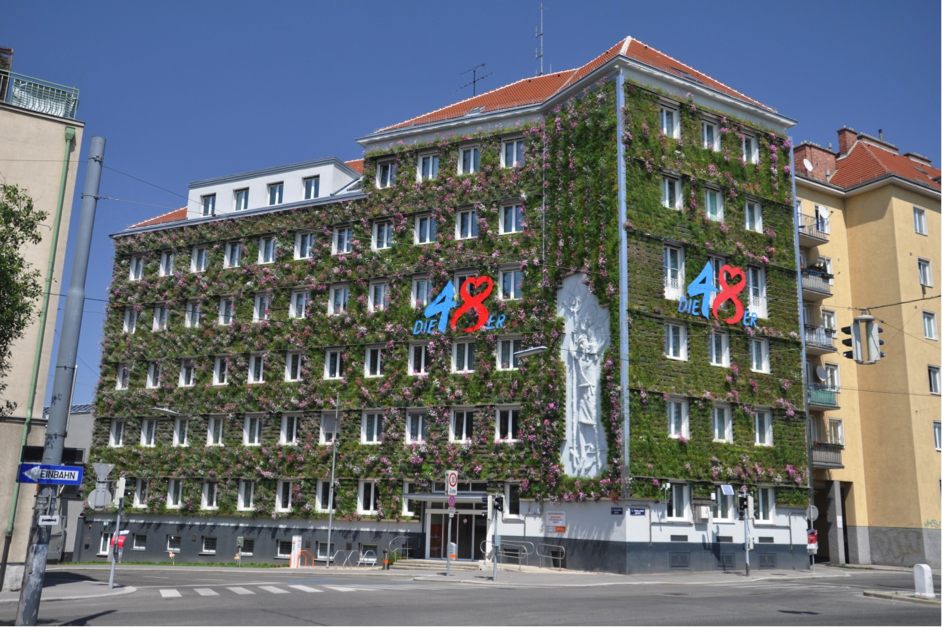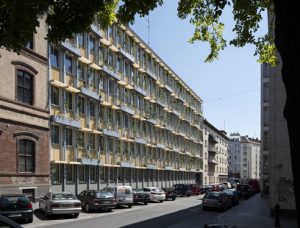
Planting greenery on large facades improves the climate both in the buildings as well as in the immediate surroundings. After analysing the formation of an existing facade, green structures can be tailored to fit the building.
What potential do green facades offer in densely populated urban areas in Vienna? What does it mean for the urban micro-climate and for the well-being of the inhabitants? What structure of greenery does an already existing architecture need to preserve its original appearance? Should this be preserved at all? These were the questions which were pursued in the following two projects.
Headquarters of the Municipal Department for Waste Management
The headquarters of the Municipal Department for Waste Management (MA48) were lined with a green facade. A total of 2,850 meters of aluminum trays were installed on 850 square meters of facade. In close collaboration with BOKU (University of Natural Resources and Life Sciences) and the Municipal Department for Parks and Gardens (MA42), 6 types of plants were selected from 60 suitable plant species. Approximately 17,000 plants were planted, mainly perennials, grasses and herbs. The plants grow between 15 and 60 cm high, some like the catnip blooms colorfully during the summer. Green facades offer a great potential for dust filtration and air improvement.
The green facade additionally offers a rain and wind protection and has a positive influence on the sound and heat insulation. The project was implemented together with MA42 and scientifically monitored and documented by BOKU University and the Institute of Meteorology. The BOKU documented microclimatic effects such as air temperature and humidity in front of, in and behind the facade, soil moisture and radiated heat. Furthermore, BOKU observated water content, building physics and biomass construction. The green wall is a development of the company TECH METALL in cooperation with the company Dachgrün.
Grabnergasse 4
In the case of Grabnergasse 4 it was necessary to thermally refurbish a building from the 1960s and combine it with green infrastructure elements. The static investigations showed that the load of the greenery to be fixed onto the facade was to heavy. Instead, it was possible to place an individual structure on its own foundation in front of the building and to lean it (non-load bearing) against the facade.

On the supporting columns of rectangular hollow profiles, troughs were fixed, which strengthens the supporting structure, offers a large root space and sun protection from above. The large root space gives the possibility to use climbing plants and vine plants, which can grow on risers above the storey heights. Due to a plant – mixture with evergreen tendrils, the lateral shading will also be present to a lesser extent in winter. The tendril stands are designed to provide optimal support for the plants, but also to optically structure the facade as long as it is not green. The planting and the troughs provide an optimal shade with an unobstructed view. The troughs are arranged alternately with fixed sun protection lamellas, which create an interesting pattern on the facad.
Contact
Headquarters of the Municipal Department for Waste Management:
Mag.a Anita Voraberger
Press Officer of Executive City Councillor Mag.a Ulli Sima
E-Mail: anita.voraberger@wien.gv.at
Grabnergasse 4:
Rataplan Architektur ZT GmbH
E-Mail: info@rataplan.at
Website: www.rataplan.at
This post is also available in: German



